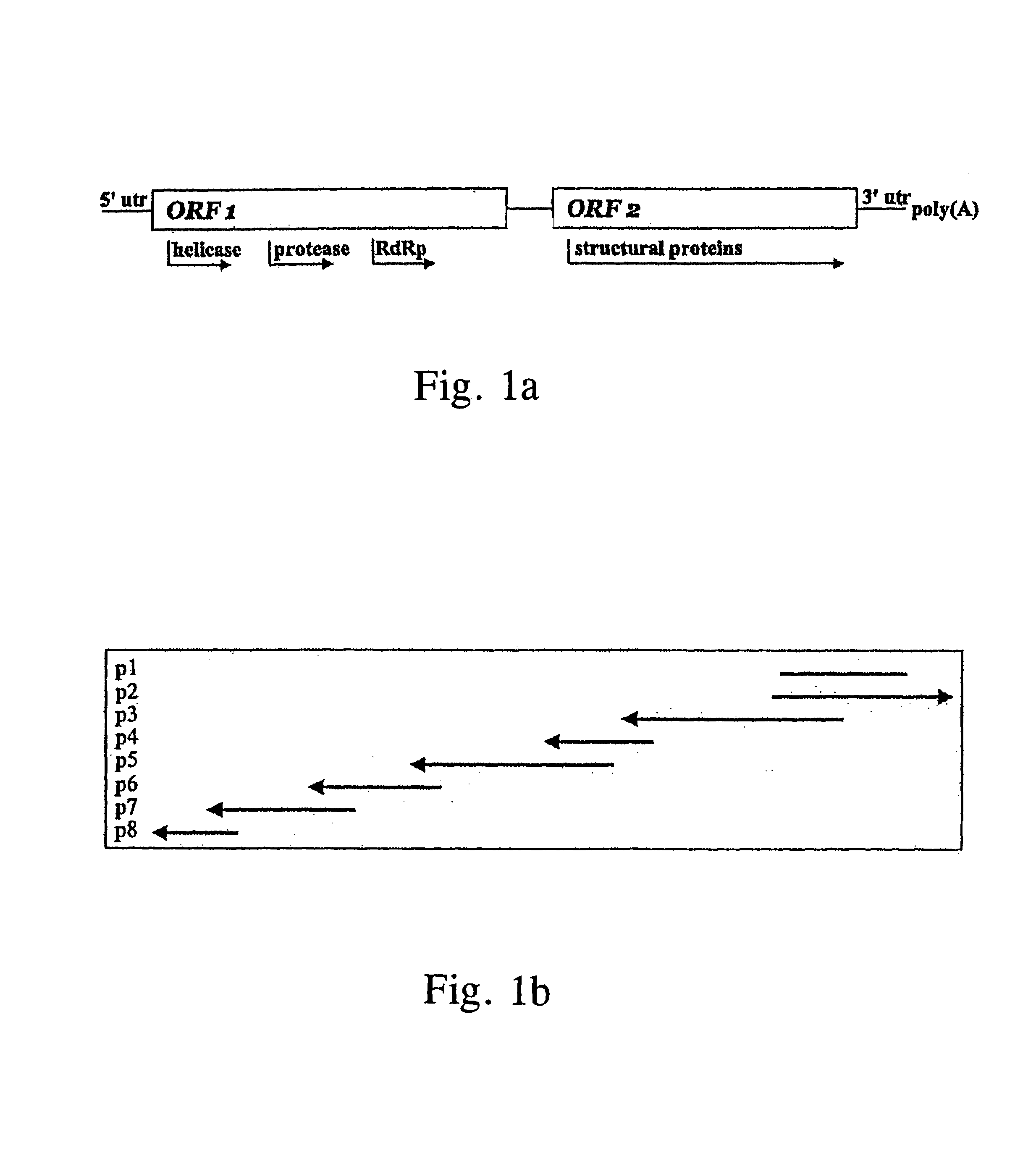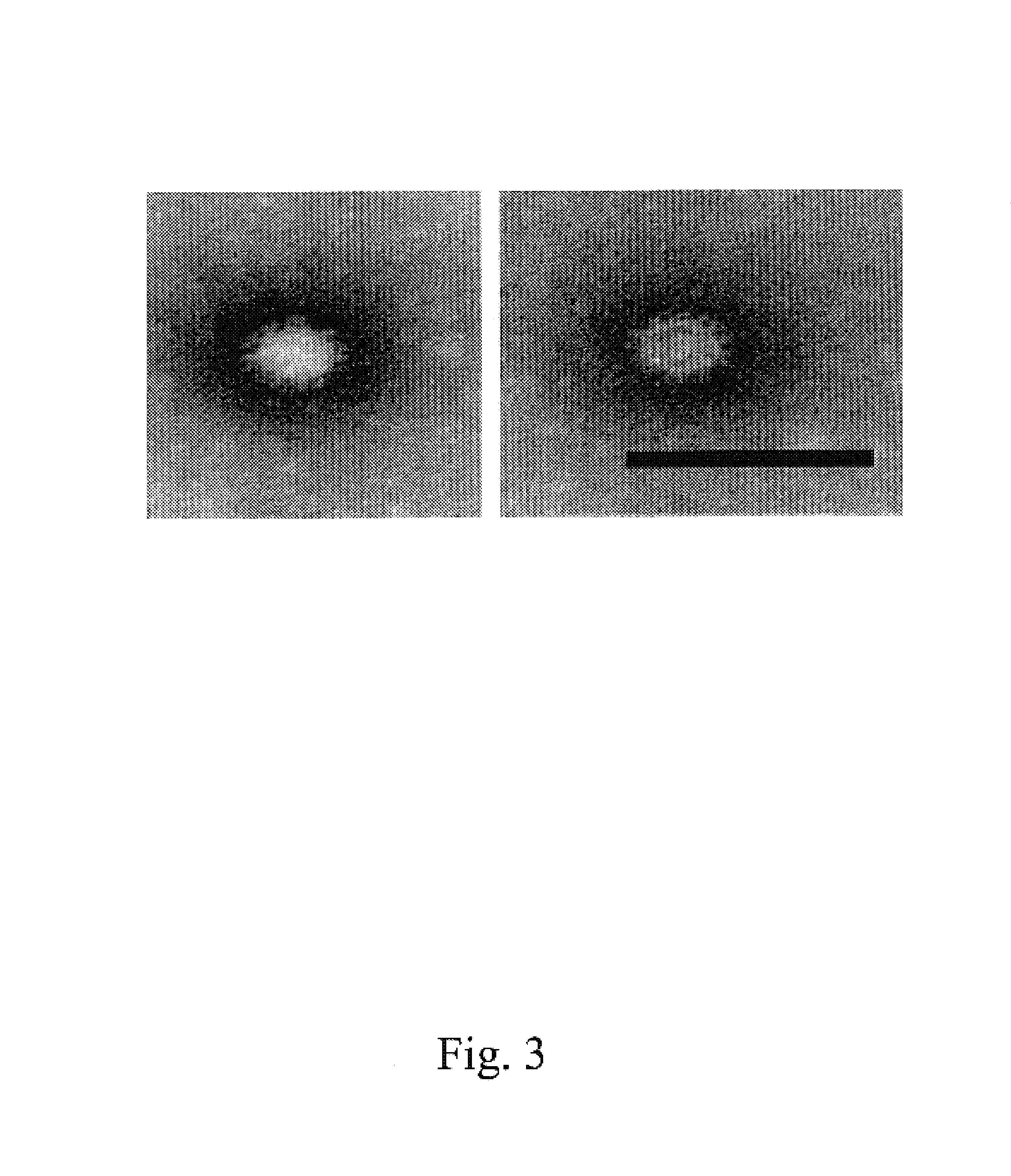Solenopsis invicta viruses
a technology of invicta viruses and syncytial spores, applied in the field of biological methods and products, can solve the problems of fire ants, a danger to wildlife, nesting birds and animals, and damage to farm equipmen
- Summary
- Abstract
- Description
- Claims
- Application Information
AI Technical Summary
Benefits of technology
Problems solved by technology
Method used
Image
Examples
example 1
[0058]A one-step reverse transcriptase polymerase chain reaction (RT-PCR) was used to identify SINV-1-infected S. invicta ants. A 20 ml scintillation vial was plunged into a fire ant mound in the field for several minutes to collect a sample of the worker caste. The ants were returned to the laboratory and RNA was extracted from about 20-50 workers using TRIZOL reagent according to the manufacturer's directions (Invitrogen, Carlsbad, Calif.). cDNA was synthesized and subsequently amplified using the One-Step RT-PCR kit (Invitrogen) with oligonucleotide primers p62-SEQ ID NO 25 and p63-SEQ ID NO 26 (Table 1). Samples were considered positive for the virus when a visible amplicon (about 327 nucleotides) was present after separation on about a 1.2% agarose gel stained with ethidium bromide. RT-PCR was conducted in a PTC 100 thermal cycler (MJ Research, Waltham, Mass.) under the following optimized temperature regime:[0059]1 cycle at about 45° C. for about 30 minutes;[0060]1 cycle at ab...
example 2
[0079]A field survey was conducted to examine the extent of SINV-1 infection among S. invicta nests from locations around Florida. Nests were sampled from Gainesville (n=72), Newberry (n=11), LaCrosse (n=9), McIntosh (n=9), Fort Pierce (n=6), Orlando (n=4), Okahumpka (n=4), Ocala (n=4), Canoe Creek (n=4), Fort Drum (n=4), Cedar Key (n=11), Otter Creek (n=10), Bronson (n=9), and Perry (n=11). Samples of workers were retrieved from the field and treated as described above in Example 1. Primer pairs p62 / p63 (SEQ ID NO 2 / 3), p136 / p137 (SEQ ID NO 7 / 8), or p164 / p165 (SEQ ID NO 15 / 16) were used in an RT-PCR reaction to determine the presence of SINV-1 infection (Table 1 above).
[0080]Experiments were conducted to determine if the virus was infecting all caste members. Samples of workers were taken from ant nests from areas in Gainesville, Fla. and examined for infection by RT-PCR using primer pairs p62-SEQ ID NO 2 / 63-SEQ ID NO 26, p136-SEQ ID NO 7 / 137-SEQ ID NO 8, or p164-SEQ ID NO 15 / p165-...
example 3
[0083]To evaluate the transmissibility of the SINV-1, uninfected polygyne nests were identified by RT-PCR, excavated from the field, and parsed into two equivalent fragment colonies comprised of a queen, about 0.25 grams of brood, and about 0.5 grams of workers. Colonies were infected by the method described by Ackey and Beck (J. Insect Physiol., Volume 18, 1901-1914, 1972, herein incorporated by reference). Workers and brood, about 1-5 grams each from an SINV-1-infected colony, were homogenized in an equal volume of water and immediately placed onto boiled chicken egg yolks which are a food source for ants. The food source was placed into one of the fragment colonies for about 3 days. The control was identical except uninfected ants were used. Workers from treated and untreated paired fragment colonies were sampled at about 3, 11, and 18 days after introduction of the treated food source and analyzed for the SINV-1 by RT-PCR.
[0084]To determine the duration of SINV-1 infection withi...
PUM
| Property | Measurement | Unit |
|---|---|---|
| diameter | aaaaa | aaaaa |
| accelerating voltage | aaaaa | aaaaa |
| pH | aaaaa | aaaaa |
Abstract
Description
Claims
Application Information
 Login to View More
Login to View More - R&D
- Intellectual Property
- Life Sciences
- Materials
- Tech Scout
- Unparalleled Data Quality
- Higher Quality Content
- 60% Fewer Hallucinations
Browse by: Latest US Patents, China's latest patents, Technical Efficacy Thesaurus, Application Domain, Technology Topic, Popular Technical Reports.
© 2025 PatSnap. All rights reserved.Legal|Privacy policy|Modern Slavery Act Transparency Statement|Sitemap|About US| Contact US: help@patsnap.com



